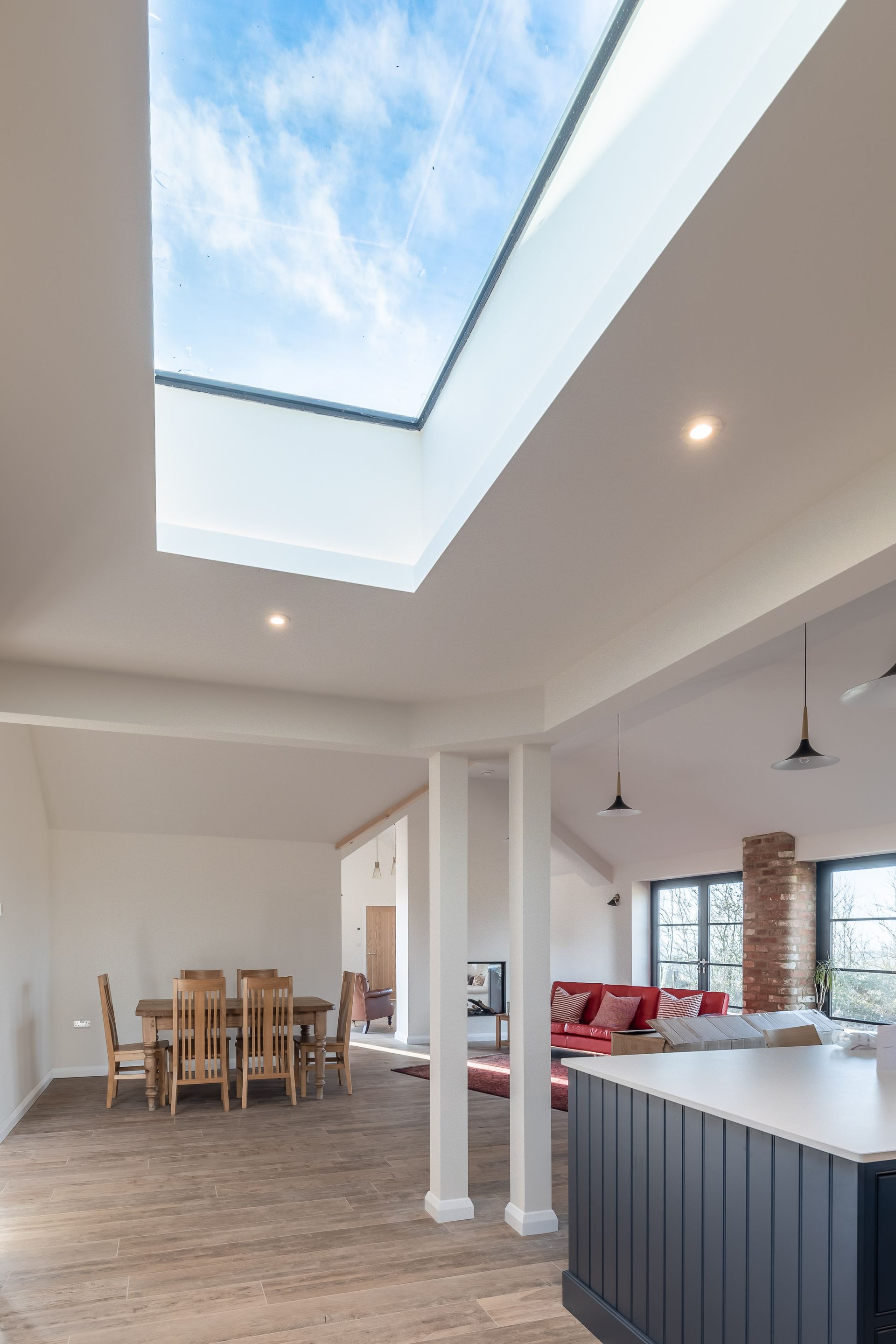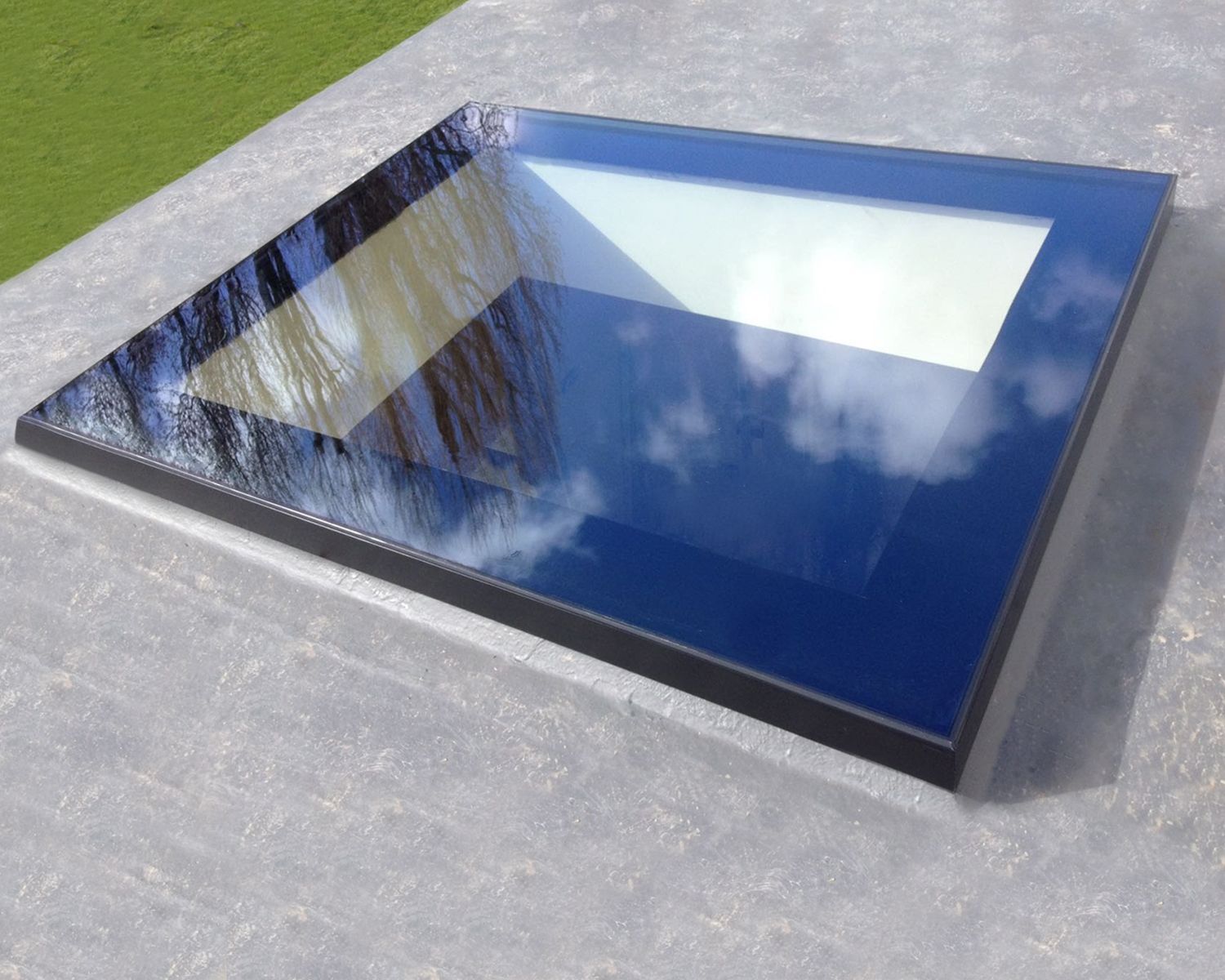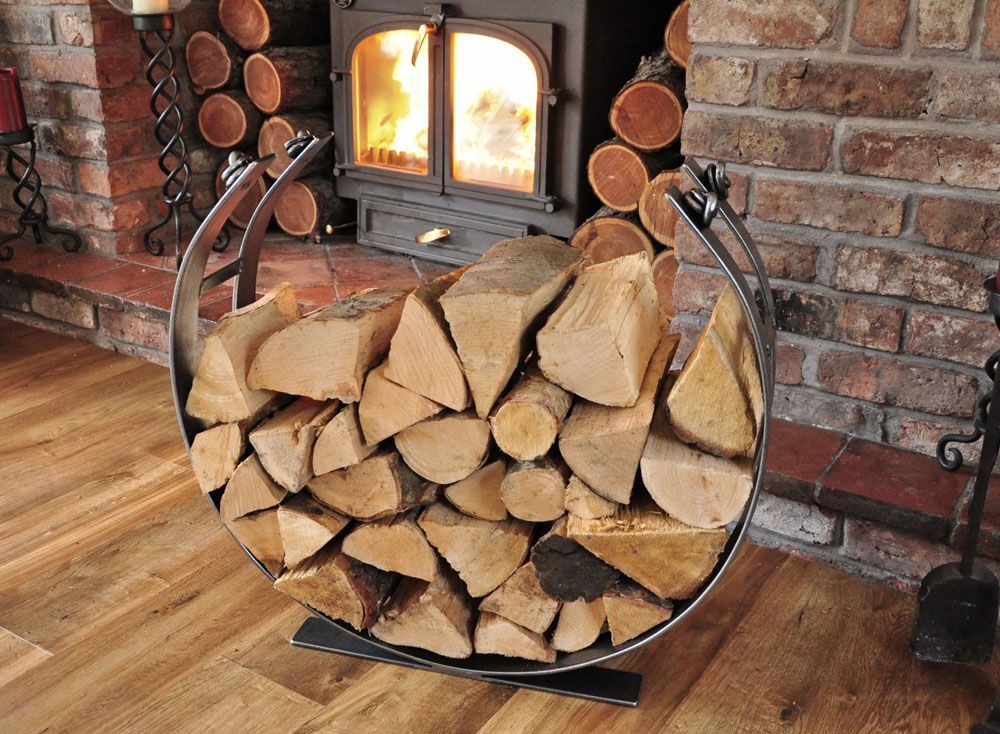There’s cast iron rainwater goods… ...and then there’s the not so goods!
Ever since there have been domestic dwellings, there have been methods devised to carry away rainwater from the roof to protect the fabric of the building. Indeed the first recorded rainwater pipe was erected in 1066 at the Tower of London to protect its newly whitewashed walls.
However, the use of gutters and downpipes remained relatively uncommon up until the 18th century, when houses relied heavily on broad-spreading roofs to shed water clear of the walls and foundations.
The idea behind a rainwater system is relatively simple. In general, rain is collected into a gutter, taken down to the ground via vertical pipes (downpipes) and then into the ground via a collector (gulley) before disposal in a drain or soakaway.
Today, you can still see evidence of those early cast iron rainwater systems, which have stood the test of time and provide an aesthetic reminder of what is possible when it comes to the architectural individuality of a building. Whether you live in a period property or a new build home, there is simply nothing that comes close to the quality, style and timeless design that cast iron rainwater systems can offer.
BEFORE YOU BUY
When it comes to buying your cast iron rainwater system, cast iron guttering, cast iron hopper heads and cast iron brackets, you should seek professional advice to ensure that you get the correct size, quantity and style.
In areas of the UK where we experience a lot of rain (which to be fair is most of the country!) and/or properties that have a steep pitched roof, you may require a larger cast iron gutter section and a greater number of cast iron downpipes. Cast iron gutters are available in a variety of sections, the most common being a simple half-round, with the more intricate, Ogee, used more on classic and older-style buildings. The cross sectional area of the cast iron gutter determines its ability to cope with the water shed from the roof. If in doubt which cast iron system and individual components you require for your home, speak to a friendly Metal & Glass cast iron expert, who will be able to advise you on the best option for your home.
As a general rule, for every 10msq of roof you will need 700mm cross-section of cast iron down pipe. It is always advisable to split your long runs and have two or more cast iron downpipes, as opposed to relying on a single one.
If you absolutely must have a single cast iron downpipe then it needs to be placed at the centre rather than at the end of a run. The maximum distance between downpipes should never be more than 12m and the fall of the cast iron gutter should be no less than 1 in 500 (approximately half an inch fall for every 10 horizontal feet). Of course this assumes that you have perfect alignment, with no sagging pipes.
It stands to reason that the greater the fall, the faster the gutter will empty.
Shoes and elbows divert water away from the base of the wall and in to a gulley set into the ground. A leaf trap is particularly important if there are trees in the vicinity, which will be true of most houses, as you’ll be surprised just how much debris that can be washed off a roof.
Make sure that every element of your cast iron rainwater system is functioning as it should as just one wek link in the chain can cause problems, especially in heavy rains. Be sure that all your gullies discharge into one or more suitably-sized soakaways, or a proper storm water drain. Draining into a foul water sewer should be avoided if at all possible.
Metal & Glass offer the means to ‘harvest’ rainwater, which offers a much more economically viable and environmentally friendly option.
WHAT TYPE OF RAINWATER SYSTEMS ARE AVAILABLE?
Cast iron is the oldest, and arguably the best, although uPVC is the most commonly used (mainly due to lower costs), with aluminium and copper systems typically used for more specialist projects.
Cast Iron
Cast iron rainwater systems were introduced in the late 18th century as a mass-produced alternative to lead. The use of cast iron enabled eaves gutters to be installed much greater simplicity. By the mid 19th century cast iron was by far the most popular rainwater material, with lead systems occasionally used for down-pipes and ornate hoppers. As a result, most period style buildings still to this day have cast iron rainwater systems.
Cast iron pipes, iron gutters and their cast iron brackets and fittings offer a highly distinctive and aesthetically pleasing and incredibly durable option. Preserving and maintaining an original rainwater system greatly contributes to the external character of a property. Victorian and Edwardian cast iron hopper heads often display a date, initials or a coat of arms, all of which add to the architectural value of the property.
Cast iron rainwater system repair
If you’re undertaking a building renovation project and need to replace old faulty rainwater systems, then you should seriously consider replacing what’s already there, like for like - even if this is not a stipulation of planning approval. Cast iron is perfectly suited to traditionally styled new build projects as well, a new house trying to attain a certain style can be easily ruined in an effort save a few pounds on the rainwater goods.
It is not always easy, however, to find an exact replacement for particular profiles or styles, and sometimes the only solution is to create replicas. In sensitive projects where historical gutters simply can’t be removed, it may be necessary to copy a pattern in situ using a template.
Installing cast ion rainwater systems:
Joints in cast iron down-pipes don’t need sealing because the upper pipe runs inside the socket of the lower pipe, preventing leaks, and an unsealed pipe will be easier to dismantle and repair in the future. Gutters, on the other hand, must be sealed. In the past, joints were caulked using red lead putty, but this has now been replaced by low-modulus silicone sealants. The sealant is spread evenly within the gutter socket before placing the gutter spigot into the socket and bolting them together with stainless steel or zinc-plated screws and washers. Wall fixings should always be made of stainless steel, as rusting steel buried in masonry can cause the wall to crack. Once the installation is complete, it should be tested using a hose or watering can to check there are no leaks and that the walls remain dry.
Repairs
Cast iron is a strong material which, if correctly designed and maintained, can be one of the most durable elements of the building fabric. However, if the protective paint layer is neglected, the underlying metal will rust and eventually fail. Traditionally, cast iron was protected using lead based paints so watch out for this if you are working on an old house as lead is highly toxic.
Today the most popular are alkyd-based oil paints which are applied in two coats over a zinc-rich primer. Three top coats may be necessary in aggressive environments such as coastal areas. When repainting, make sure all areas of paint that are in poor condition are properly covered; patches of missing paint should be primed and re-primed before painting.
Particular care should be taken when dismantling sections of guttering because cast iron is a brittle material and joints must not be forced.
If the rainwater goods have been badly neglected it may be necessary to remove all the paintwork and rust by carefully shot blasting the surface to strip it back to the bare metal. Only then can the condition of the metalwork be examined to determine the level of decay. It is always advisable to at least record the colour of the old paint so it can be restored to its original colour.
uPVC (Unplasticized Polyvinyl Chloride)
Overwhelmingly the most popular, uPVC is inexpensive, durable, and easy to install.
Early plastics tended to get brittle on exposure to sunlight, lose their shape, sag, and discolour. All these disadvantages are still present to some extent with modern uPVC fittings but much less so with the coming of vinyl. Manufacturers now claim a 25-year lifetime, with a range of colours using specialised paints.
Despite these improvements, uPVC still looks insubstantial, has little intrinsic architectural ‘character’ and expands with heat, making it unsuitable for very long runs. It is however attractive on the grounds of cost and ease.
Installation
uPVC is easy to install. Start with the positioning of the downpipes over the gulleys. Vertically above these at eaves level, positioning your running outlets is the next job. These should be the lowest points on the gutter run. You can judge this level by erecting a tight string line along the whole length of the fascia. If your run is very long you may need to support the string in between to keep it level.
Fix a bracket 150mm from the first running outlet; go to your furthest point, or the next running outlet and place another bracket there. It may help now to tighten the string between these two brackets. Next fit brackets at the distances suggested by the manufacturer, remembering to use more screws or smaller distances between brackets if you have a snow load to cope with. Usually, fascia brackets are fitted at about 800mm centres on straight runs.
Straight couplers join lengths of actual guttering to each other and stopends are fitted at the uphill ends. Stopend outlets are used where you have a downpipe at one end of your gutter.
Angles and stopends should have a fascia bracket within 150mm of the fitting.
Cut the gutter to length up to the marked cut line at the gasket/seal joint to allow for expansion and, after lubricating the seal well with silicone spray or washing up liquid, push it firmly into place. Start at the outlet, insert the back edge first up and under the retaining clip, then push down until the font clicks firmly into place. Now add a straight coupler and repeat the process.
Fit the downpipe to the wall at approximately one metre centres (spaced evenly) and fit an elbow or shoe to get the water safely into your gulley. It’s possible to run the pipe itself into the gulley but this makes cleaning difficult whereas a shoe can easily be removed to get your hand down the drain. Some people leave shoes and elbows out but they’re important, especially in windy situations where water can be blown from the open end of the pipe against the wall.
Test as before with a watering can or hose, watching for drips.
ALUMINIUM
More expensive than uPVC, it’s durable, looks great, takes paint well, and is easy to install, but by a professional. Unlike iron or steel, aluminium won’t rust and many companies supply it pre-painted. I use this system more than any other because it can be created on site from the back of a van to any desired length in one seamless, continuous length. The absence of joints is a massive plus for future maintenance (or lack of it!). Apart from periodic repainting, this system is virtually trouble-free apart, perhaps, from renewing any sealants at the few seams every few years. Aluminium, is, however, a soft material and dents easily if you lean ladders against it. In high-wind situations is can also emit a strange ‘moan’. But these are small disadvantages compared with the many plusses.
COPPER
This expensive material takes rainwater disposal to new heights. Copper rainwater goods become an integral part of the architecture and look like nothing else. Far from trying to hide these fittings, many people actually feature them. Because copper gutter profiles can be bigger than other materials it is also possible to get away with fewer downpipes.
Unfortunately copper is expensive to buy and install because there are few tradesmen competent to handle it. Skills required include the ability to join and solder the system elegantly and effectively, avoiding stains from finger marks (using clean gloves all the time), and avoiding burn marks from heat sources. Over the years a copper system oxidises naturally to a pleasant dull green but at first it can look rather ‘bright’ for some tastes. Some companies treat the copper so it remains bright for longer but all copper will tarnish eventually. Given the high cost, this will always be a specialist buy even though it’ll outlast any other metal system.
MAINTAINING YOUR RAINWATER SYSTEM
Neglecting a property’s rainwater disposal, whatever material it’s made from, can cause serious structural deterioration, especially if the building is old. Regular inspection could prevent the need to spend hundreds of pounds at a later date dealing with dry rot in timber roof trusses, damp penetration of walls, or a flooded basement or ground floor because of a blocked drain.
Maintenance checklist:
Remember to take great care when working at heights. If you have lots of work to do, hire a tower. If in doubt, get professional help.
- Regularly clean out gutters and check that downpipes are clear. This should be done at least twice a year but more often if you are surrounded by trees. The best time to care for your guttering is after all the leaves have fallen. You may also need to go out one day when it’s raining hard, to spot signs of leaks and overflows.
- If there seems to be a blockage, scoop out the rubbish using a trowel, then flush the whole length of the gutter with a hose. Don’t flush debris down the pipes.
- Run a hosepipe into the open end of the downpipe up top and ensure that water flows through. If you can, try to catch the water as it flows out below so that the gulleys don’t block with the flushed-out rubbish. If water backflows up the downpipe, try stuffing the hose down to unblock things. If this doesn’t work, use a thin cane or long stick to work things free. To prevent further problems install a cage into the top of the downpipe or even consider a mesh cover for the whole length of the affected gutter.
- Check that all hopper heads, flat roofs and drainage channels are clean.
- Clean polyester-coated surfaces with a warm, mild detergent. Never use abrasives.
- Check that wire gutter meshes are still in good order.
- Clean out gulley traps and run a hosepipe down them for a few minutes until they run freely.
- Check all gutter brackets and fixings at least once a year. Snow or ice loads, or ladders leaned against them could have loosened them.
- Check the fall of your guttering if it looks as if it’s sagging. If there’s less than 5mm of water sitting in a pool anywhere, don’t bother to do anything. If there’s more, try fitting additional supporting brackets. These can often take out the slight sag and reduce the pooled water depth. If the sagging is at all severe it’s best to take out the affected section and, using a string line, to re-install with properly aligned brackets.
- Cracks in plastic guttering aren’t worth repairing. Replace the damaged part. Take great care when replacing long lengths of even plastic (lightweight) guttering. Get help if in doubt.
- Leaking joints. Metal guttering joints need cleaning off and fresh metal putty or sealant inserted before replacing and tightening the bolts. Unfortunately, removing or even doing work on one section of cast-iron guttering can put stresses on the rest of the run, producing leaks elsewhere.
- Plastic guttering joints can leak too. Release the affected joint, possibly a nearby supporting bracket too. Try cleaning the gasket thoroughly with detergent and then, after carefully lining up both sections, with the upper section covering the gasket, press firmly into place leaving a 5mm gap for longitudinal expansion. If the gasket is worn, replace it or, after thorough cleaning, create a new one using three beads of mastic.






